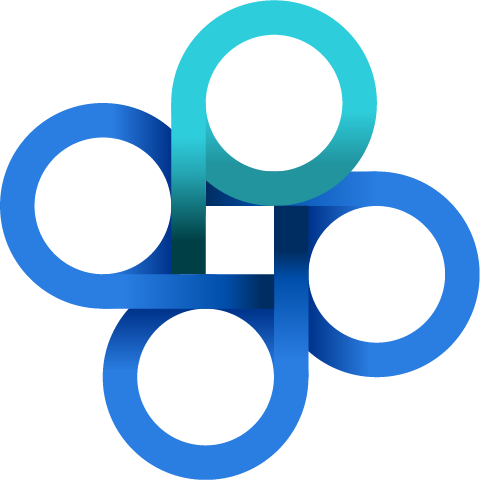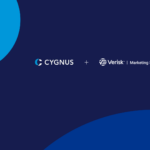Can Big Data Really Help You Understand Buying Intent?
We hear from most marketers these days that their challenge is not a lack of data but an overwhelming abundance of data—and no way to harness it or distinguish which data really matter.
Marketers would love having the ability to know when a consumer is in market—or, better yet, exactly which phase of the buying journey each consumer resides in at any given time.
So, can big data really help you predict buying intent? Yes, it can. But, if you don’t know which data matter most and how to leverage the data to make improvements to your business, it is not worth the time and effort of figuring out how to harness it in the first place.
How can data help?
You certainly can leverage data to determine where a consumer sits in their buying journey—once you know how to capture the right data. In fact, many companies are using their own data to answer this question today.
For example, some organizations track visitors on their own (first party) website, and if they see they are visiting certain pages and looking at certain information on the site, especially if they become repeat visitors, they will respond to this shopping activity appropriately. They can also use data points gathered during a conversation resulting from a phone call to flesh out that consumer’s shopping experience.
By leveraging software solutions, you can easily deploy those tactics. The challenge lies in what you don’t know is happening outside of your own web properties and interactions with your brand. Everyone has heard the staggering statistics by now from various sources—including often-quotedSirius Decisions—about how much of the purchase decision journey (67 percent) a consumer is conducting online. In reality, consumers are searching not just your branded sites, but also your competitor’s sites as well as third party resources to educate themselves before making a purchase decision.
For example, Jornaya research shows that when looking at the mortgage industry, on average, consumers who converted into funded loans had four industry touch points prior to submitting a web form. Three of those visits were to unique sites, exposing that mortgage consumers are researching on multiple sites before they take any action.
Access a Broader Data Set to See the Entire Buying Journey
One reason many marketers don’t even think about this is that they don’t even know there’s an option to expand their view of the consumer journey. They’ve never had access to data outside of their own brand’s perspective. But, with new technologies available today, more and more companies are tapping into the entire consumer journey. Third party intent data is opening up a whole new world to marketers today. By not leveraging this available data, companies risk losing out on business.
Let’s look at a real life example. I was recently in the market for a car and I spent about four months in total researching before I made the purchase. I started by conducting a good bit of research on several different sites like Kelly Blue Book and Cars.com and ultimately decided I wanted to buy an Acura. It wasn’t until close to the end of my online research phase that I finally visited my local Acura dealership’s website to see what colors and fabric choices were available for the model I wanted. At that time, I submitted a web form to request information from the local Acura dealer. The dealer sent an email reply with information about the the color combinations I had requested. The next day, I went to Carsense and bought a pre-owned Acura.
From the local Acura dealership’s point of view, I had made just one inquiry with no strong signal of true intent. Perhaps they could have guessed that I care enough to be looking at color options because I was at the decision stage of my buying journey, but, with the limited information from only their first party site, that is not as obvious.
But, if the dealership had access to all of the data available and could see my entire shopping journey, they would see that I was looking at color options on their site after several months of activity. How different might it have turned out if the Acura dealer could see that in the week leading up to that web form submission, I was on other car websites every day, researching my options?
If they had that sharper view into my journey and could see all of those sure signals of intent, they could have treated my inquiry much differently. They could have called and offered me an aggressive discount or low financing rate, among other tactics to win my business.
Additionally, from Acura’s limited, first party-only point of view, they only saw my interest in an Acura. But, in actuality, the first several months of my buying journey, I just wanted “a car”, not specifically an Acura. It took several months for me to narrow down my selection to the Acura. When a brand has only a first party view of a consumer, it is not truly focused on solving the consumer’s need (i.e. selecting the right car) — it is focused only on the consumer’s need as it relates to their brand (i.e. selecting the right Acura.)
In the graph above, we see that the Acura dealer only sees the eighth step in my shopping journey. If the Acura dealer had a view of my entire journey, they could have approached me much earlier to help me focus on the Acura sooner, and could have nurtured me along the way so that when it came time for me to make a choice, I’d be more likely to come to them for my pre-owned Acura.
Additionally, because I bought from Carsense and not the Acura dealer, the Acura dealer translates my behaviors into me being someone who did not convert (since they had no way to see the conversion.) This could lead well-intentioned, but ill-informed marketers to make disastrous conclusions about me.
Which data matters to understand intent?
The three most impactful parameters for understanding a consumer along his journey are:
- Recency: has the consumer expressed interest in a recent period?
- Frequency: how often has the consumer expressed interest?
- Engagement: how deep is the consumer’s research?
Once you have a view of these three parameters, you can place every consumer in the appropriate stage of their buying journey—be it the attention (general awareness), interest (researching broad options), decision (narrowing options), or action (taking the action to purchase) stage.
How to Leverage Intent
Once you have determined in which stage a consumer sits, you can decide what strategies and tactics to deploy with that consumer, such as offering an appealing special offer to a consumer who you have determined is in the decision stage.
The concept of consumer intent is how you can identify when you are interacting with consumers, or have an opportunity to interact. If you can determine where they are in the buying journey, you can have a much more relevant conversation to get to the outcome you desire.
For example, if you were a mortgage lender interacting with a prospective customer early in their buying process, data could reveal to you that this consumer was very early in process to buy a home. The data would show that he was looking at rates, but hadn’t even looked at a single home yet. If you had access to this data, you could have a very specific, compelling approach to marketing to this consumer, such as putting him into a nurture campaign with educational resource downloads and other informative content that is relevant to someone just beginning their journey. You would know not to make persistent phone calls and try to hard sell him, since the signals clearly indicate he’s just seeking initial information.
On the flip side, if you had a consumer in your funnel who is already under contract for a home, you would likely want to put out an all out hard sell to convince her why you are better than the competition and maybe even offer her a special deal.
Applying Intent Data to Your Existing Customer Base
Any organization that offers a product to a consumer knows that just as there are stages of the buying journey, there are several stages of the lifecycle for the consumer who becomes a customer, typically:
- First the consumer has not yet had any exposure to the brand
- Then she is aware of the brand, but isn’t yet interacting
- Next, she interacts and becomes a customer
- Finally, she is in the stage where the brand must retain her as a customer
- In tandem with retention is the stage where the brand will attempt to upsell and cross-sell her on additional products or services
To be a successful marketer, you understand the costs associated with losing a customer, which is why you are constantly trying to optimize and maximize the number of customers who you can retain as loyal customers.
Intent data is a valuable resource for identifying ripe cross sell opportunities. Say you are an insurer and have an existing home insurance customer. Intent data could inform you when some of your customers are in the market to buy a new car. If you knew those consumers were in market for a new car, then you’d know it is the perfect time to deploy your cross selling tactics for car insurance, offer them a multi-policy discount, etc. Not only does this become a cross sell opportunity, but it could also end up being a retention strategy as well, since the car dealer may try to sell them insurance from a competitor through a partnership they have, opening the door for that competitor to also take away your existing business.
Speaking of retention, let’s look at another example: If you are a telecom company and a subset of your customers will be moving in the next year, how do you ensure that you will stay in their consideration as a service provider when they move? If you observed the intent data signals that indicated these customers were planning to move, perhaps you could provide special offers for customers who continue with your service when moving.
In a Nutshell
When you understand your consumer’s full buying journey and you use all the data you have access to, you are creating the sharpest view of the consumer possible. But, the only way to get the highest resolution view of the consumer is by accessing data outside just your narrow, first party perspective. Once you have access to that sharper view, you can make sounder decisions and take the most appropriate actions that will lead to better results.
Lauren Dickstein, VP Data and Analytics Strategy








 Your Privacy Choices for Platform Services | Data Services
Your Privacy Choices for Platform Services | Data Services